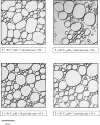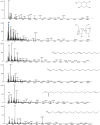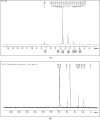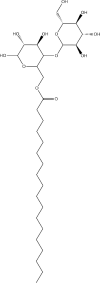Isolation and chemical characterization of the biosurfactant produced by Gordonia sp. IITR100
- PMID: 35421133
- PMCID: PMC9009618
- DOI: 10.1371/journal.pone.0264202
Isolation and chemical characterization of the biosurfactant produced by Gordonia sp. IITR100
Abstract
Biosurfactants are amphipathic molecules produced from microorganisms. There are relatively few species known where the detailed chemical characterization of biosurfactant has been reported. Here, we report isolation and chemical characterization of the biosurfactant produced by a biodesulfurizing bacterium Gordonia sp. IITR100. Biosurfactant production was determined by performing oil spreading, drop-collapse, Emulsion index (E24), and Bacterial adhesion to hydrocarbons (BATH) assay. The biosurfactant was identified as a glycolipid by LCMS and GCMS analysis. The chemical structure was further confirmed by performing FTIR and NMR of the extracted biosurfactant. The emulsion formed by the biosurfactant was found to be stable between temperatures of 4°C to 30°C, pH of 6 to 10 and salt concentrations up to 2%. It was successful in reducing the surface tension of the aqueous media from 61.06 mN/m to 36.82 mN/m. The biosurfactant produced can be used in petroleum, detergents, soaps, the food and beverage industry and the healthcare industry.
Conflict of interest statement
The authors have declared that no competing interests exist.
Figures











References
-
- Banat IM. Biosurfactants production and possible uses in microbial enhanced oil recovery and oil pollution remediation: a review. Bioresour Technol. 1995;51(1):1–12.
Publication types
MeSH terms
Substances
LinkOut - more resources
Full Text Sources

